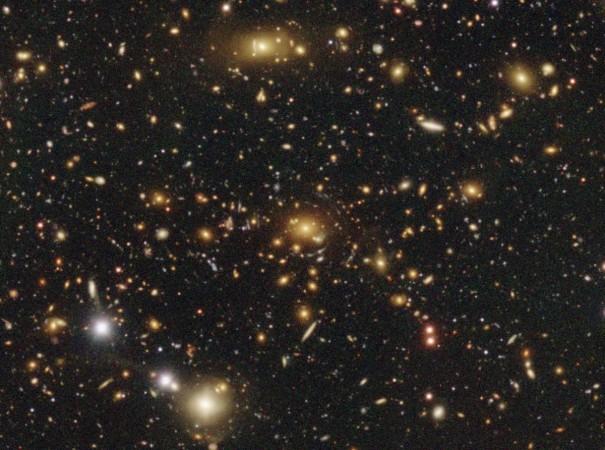
Astronomers are yet to directly observe the so-called dark matter — a mysterious type of matter that is believed to form a fundamental part of the universe.
In an effort to better understand the accelerated expansion of the cosmos, a team of Japanese researchers has come up with a comprehensive dark matter map based on the latest data provided by the Hyper Suprime-Cam on the Subaru Telescope in Hawaii.
The researchers from the National Astronomical Observatory of Japan and the University of Tokyo estimated the dark matter distribution in the universe by observing the weak gravitational lensing technique.
The observation helped the researchers produce "an unprecedentedly wide and sharp dark matter map" which covers nearly 80 times more area than that of the previous 3D dark matter map.
The new dark matter map is based on the imaging data that was collected in April 2016. Although the map is only 11 percent of the planned final 3D map, it still unprecedentedly wide and sharp, covering such a wide area of the cosmos.
As part of the research, the researchers' team located the positions and lensing signals of the dark matter halos and found indications that the number of halos could be inconsistent with what the simplest cosmological model suggests.
The researchers, therefore, believe that it could be a new clue to understanding why the expansion of the universe is accelerating. The new map also suggests that the dark matter halos are smaller in number than expected.
It was in the 1930s when Edwin Hubble and his colleagues discovered the expansion of the universe. Until the late 1990s, it was believed that the expansion was decelerating over time because the contents of the universe (matter) attract each other. However, it was found later on that the expansion was actually accelerating since about 8 billion years ago.
Recently, NASA's Hubble Space Telescope also helped astronomers achieve what was claimed to be the most precise measurements of the universe's expansion ever. The results revealed that the cosmos is expanding much faster than a previously calculated rate.










